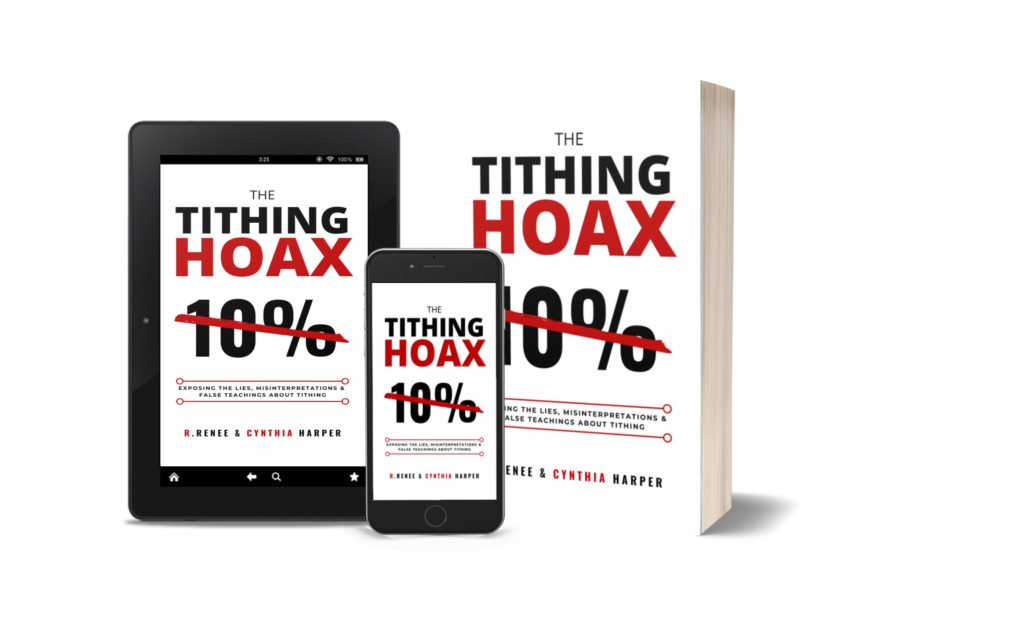It’s important to read Bible verses in the proper context. When you do so, you get the actual meaning of a text. A pastor said, “When you take the text out of context, it leaves you with con.” As you know, a con is something false. The most common “con” in the body of Christ is the Tithe Doctrine, which states Christians must pay 10% of their income to the church. Proponents of this doctrine often use proof-texting to support their position. Proof-texting is a method of dissecting Scriptures that results in false teachings.
Table of Contents
- Watch the Video
- The Wrong Way to Read the Bible
- Examples of Tithing for Christians
- Abram’s Tithe Before the Law
- The New Levites
- Jesus Tithe Scripture
- Study the Bible With the Holy Spirit
- Recap
- Find Out More
Watch the Video
The Wrong Way to Read the Bible

Proof texting takes Bible verses or passages out of context to prove one’s belief, doctrine, or argument. People who rely on proof-texting often don’t explain the verses they cite. They may ignore key factors that flesh out the meaning of the text.
These include:
- The theme of the passage or chapter.
- The writer or God’s intent.
- The person(s) being addressed.
- The social, cultural, or political climate when the text was written.
- The events preceding and following a Bible verse; and
- Passages that appear before and after a verse.
People who proof text don’t always follow good Bible study methods. They lift verses that, on the surface, appear to support their belief. This is why we say on this platform: “It’s not enough to know what the Bible says. You must know what it means by what it says.” The Bible even tells us to rightly divide the word of truth (2 Timothy 2:15).
Examples of Tithing for Christians
There are many examples of how tithe advocates proof-text to justify tithing among Christians. Pro-tithers point to pre-law tithing to prove tithing is an eternal practice carried over to the New Testament Church. They justify pastors receiving tithes based on the Law of Moses. They point out that Jesus approved the payment of tithes, which “proves” Christians should tithe. The problem with all these examples is they ignore why tithing took place.
Abram’s Tithe Before the Law
One of the main reasons Christians aren’t required to tithe is that it was practiced under the Old Covenant Law of Moses. The Law was replaced with the New Covenant, so tithing was abolished. Tithe advocates reject this argument. They say that tithing predates the Law, so it never ended. One example they give to support this position is that Abram (Abraham) tithed.
Since Abram (“the father of the faith”) tithed, Christians should follow suit. Pro-tithers figure if tithing was good enough for Abram, there’s no excuse for believers not to tithe. Well, here are a few biblical facts they ignore:
- God hadn’t established a “tithe law” when Abram tithed. The tithe commandment came into play only when the Lord entered a covenant with Moses.
- God didn’t tell Abram to tithe.
- Abram’s tithe was based on a regional social custom.
- There is no indication Abram practiced tithing on an ongoing basis.
- Abram paid tithes from the spoils of war, not from his wealth (Hebrews 7:4).
Based on Abram’s tithe, the facts show no logical connection for promoting tithing among Christians. They don’t take into account why he tithed. They ignore scriptural, historical, and cultural contexts.
Plus, it makes no sense to follow any practice simply because a biblical figure engaged in that behavior. For instance, Abram was a polygamist (Genesis 16:3), but the church doesn’t tout that as a practice for believers to adopt.
The New Levites
Pro-tithers often equate modern-day preachers to Levitical priests. The Levitical priests served God’s people in the Tabernacle/Temple. Pastors serve in the church. The Levitical priests received tithes for their service (Numbers 18:21). Christian pastors also deserve tithes. Is the parallel between Levitical priests and Christian pastors enough to justify the modern-day tithe?
Tithe advocates argue that pastors should receive tithes since both do God’s work by serving the people. While it’s true, the Levitical priests received compensation, in the form of tithes, for their service, this doesn’t justify Christians paying tithes.
Let’s take a look at a few biblical facts:
• The tithing law is part of the Old Covenant between the Lord and the ancient Hebrews. The Mosaic Covenant is not a covenant for Christians, so tithing doesn’t apply to believers.
• The tithe had to be agricultural produce from ancient Israel. The Lord didn’t accept money.
• The Lord only authorizes tithe payments for the Levites and Priests. Since Christian preachers aren’t members of the Levite tribe or the Levitical priesthood bloodline, tithe payments don’t extend to them.
• Even though Levitical priests received tithes for conducting religious ceremonies, this is not a model Jesus, the Apostle Paul, and the other Apostles followed for their ministries. In other words, they didn’t collect tithes.
• The Levitical priesthood officially ended with the destruction of the Second Jewish Temple in 70 AD. When this occurred, tithing ended.
• Most importantly, all believers are priests (1 Peter 2:5-9). Pastors do not hold a position of higher authority in the true Body of Christ. So, they have no special biblical or spiritual entitlement to receive tithes.
Uncover the hidden secrets of the tithes and the Levites in our latest article – read it today!
Jesus Tithe Scripture
Some tithe advocates justify tithing because Jesus mentions it in the Gospels (Matthew 23:23). Did Jesus support tithing? Yes. However, his support of the tithe has no logical connection to the modern-day tithe. Let’s expose the problem with proof-texting the words of Jesus by reviewing some relevant verses.
- Jesus was a Hebrew who lived under the Mosaic Law, which required tithes.
- Jesus wasn’t addressing Christians (or Gentiles). He was rebuking Pharisees and scribes for their hypocrisy (Luke 11:42).
- The tithe Jesus mentions isn’t money.
The modern-day tithe (10% of one’s income) was not practiced in the Bible. Using the Bible to support a practice that isn’t biblical makes no sense. Tithe advocates ignore the following:
1) What constituted the tithe; 2) Reasons why tithes were paid and collected; 3) Who had to pay tithes; 4) Why Jesus, the Apostle Paul, and the other Apostles didn’t pay or receive tithes; and 5) When and why tithing ended.
Study the Bible With the Holy Spirit
There’s nothing inherently wrong with using the Bible to prove a point. However, there’s a proper way to do it. A common mistake is looking at Scripture through theology, doctrine, tradition, or denominational belief. It’s better to have an open mind and a receptive spirit. Allow the Holy Spirit to reveal the text’s meaning to you.
Recap
Tithe advocates often rely on proof-texting to justify the modern-day tithe. The problem with this approach to reading or studying the Bible is that it takes God’s word out of context. They also ignore the literary, historical, and cultural context that helps believers understand biblical scripture.
Several examples of tithe advocates spreading false doctrines using the proof-texting method. They may cite Abram’s tithe, even though it was a one-time tithe that didn’t come from his wealth.
They may mention Jesus condoned tithing. But they ignore that Jesus was talking within the context of being a Hebrew who observed the Mosaic Law, a covenant Christians are not under.
They may point to the fact Levitical priests received tithes for doing God’s work, so they use that as a model for Christian pastors to follow. However, pro-tithers overlook relevant history regarding the tithe. In this case, the Levitical priesthood (and tithing) ended in 70 AD with the destruction of the Second Jewish Temple.
Tithe advocates who rely on proof-texting misrepresent God’s word. They use verses out of context while ignoring the text’s original intent. Finally, proof-texting contributes to the spread of false doctrines throughout the body of Christ.
Find Out More

Discover the hidden truth about tithes the church doesn’t want you to know. Click here.








